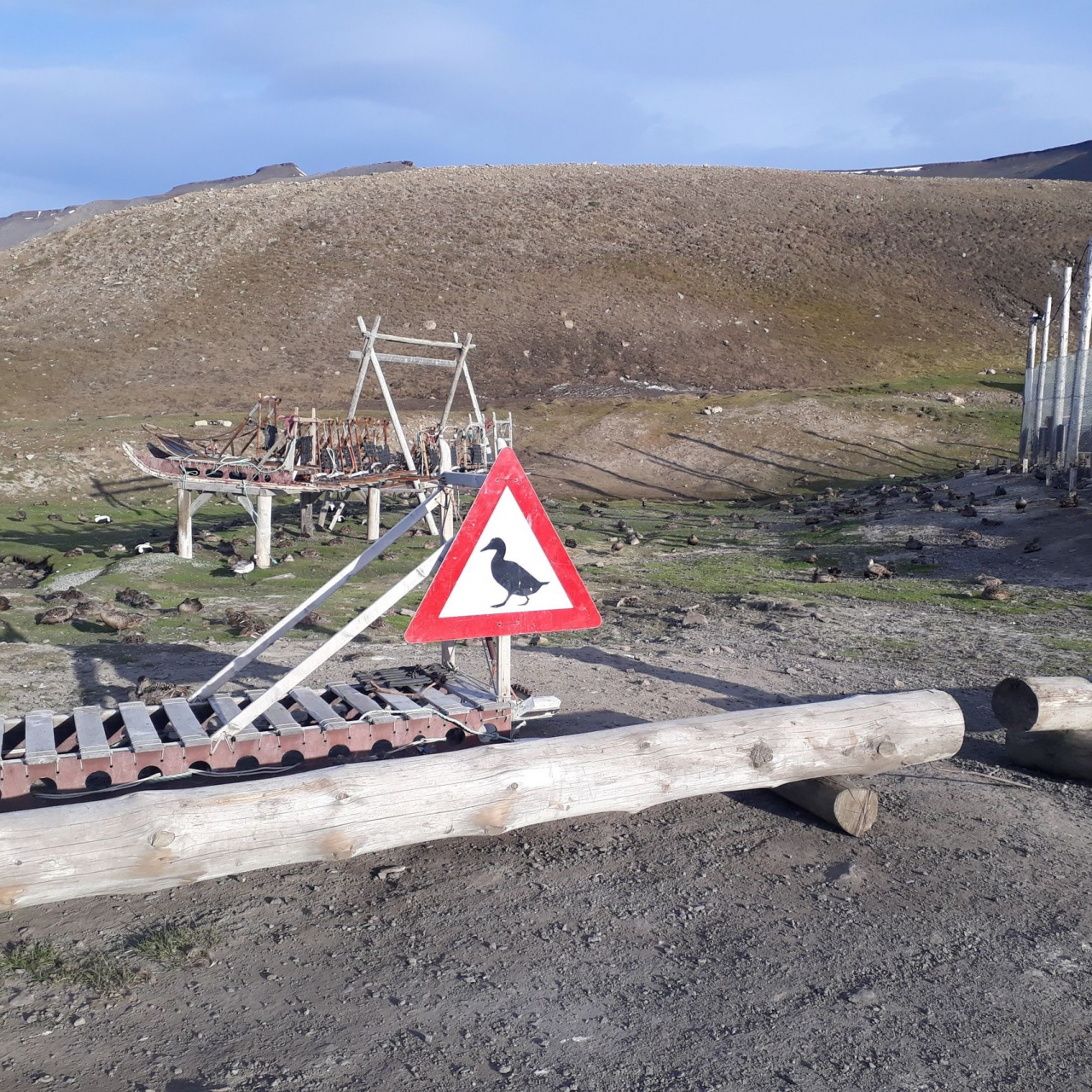PATCHY ARCTIC
More-than-human relations in the Anthropocene
Call for contributions to an edited volume
Editors
Virga Popovaite virga.popovaite@ulapland.fi / https://orcid.org/0009-0008-2656-5196
Emily Höckert emily.hockert@ulapland.fi / https://orcid.org/0000-0001-7339-3261
Hin Hoarau-Heemstra hin.h.heemstra@nord.no / https://orcid.org/0000-0003-4099-900X

Image: Virga Popovaite
More-than-Human Disruptions in the Arctic
In the Arctic, climate change occurs faster than anywhere else on Earth (Mosoni et al., 2024). A series of non-linear disruptions in more-than-human relations are present in the current epoch, the Anthropocene, which is characterised by intense anthropogenic changes undercutting the planet’s life-sustaining foundations (Crutzen & Stoermer, 2000). For example, the loss of the sea ice endangers ecosystems in the marginal ice zone (Kaiser et al. 2022), disturbs mobilities on ice due to increasing shipping (Steinberg et al. 2022), and modifies geopolitical relations (Huntington et al. 2022). Along with the changes in the cryosphere and the arrival of new species, the common challenges in the Arctic region stem from the extractivist race for minerals and the growth-oriented tourism industry. These processes are shaping the more-than-human livability of local communities in various ways, depending on the social, ecological, and historical contexts (see also Tsing et al., 2019).
Patchy Arctic: Weaving Multispecies Relations in a Changing World
This anthology in the making weaves together a patchwork of diverse ways of living in the Arctic. The title is an inspired and excited nod towards the posthuman scholars of ‘Patchy Anthropocene’ (Tsing, Mathews, and Bubandt 2019; Tsing, Deger, Saxena, & Zhou, 2024) who encourage approaching the Anthropocene as ‘patchy’. In ecology, the concept refers to small spatial units with distinct features, ‘patches’, which constitute larger ecosystems. In these patches, multispecies relations are interdependent and are shaped by humans and more-than-humans alike. The work by Anna Tsing and her colleagues uses the notion to draw focus on how the responsibilities and the effects of the Anthropocene are experienced inconsistently across the globe, transforming the planet’s ‘patches’ in complex, discontinuous, and unpredictable ways. In the Arctic context, these inconsistencies are evident in, for example, distinct localized risks associated with the cross-circumpolar phenomenon of thawing permafrost (see Gartler et al. 2025). With this book, we seek to explore the heterogeneous patches in the Arctic by cultivating a more nuanced understanding of multiple ways of relating, knowing, and attending to and with the changing world.
Caring, Relating, and Becoming with More-than-Human Worlds
‘Patchy Arctic’ attends to the supposedly ordinary and situated aspects of Arctic relations by engaging with more-than-human lives and entanglements. The book gathers around the Arctic patchwork in times of crises and disruptions to encourage exploring relational concepts, practices, metaphors, and methodologies that can enhance more responsible and caring engagement with more-than-human worlds. Caring for our biotic and abiotic companions in the entangled world-making and storytelling processes (van Dooren et al. 2016; Price and Chao 2023), we wish to turn to a myriad of concepts related to posthuman, ecofeminist, and Indigenous approaches to rethink more-than-human Arctic relations. This means asking, for instance, how notions like care, resonance, hospitality, kinship, (dis-)connection, wander, or hope can shape the ways ‘we’ relate with the bodily nature (Alaimo 2010) of changes. And importantly, what might happen when instead of aiming to control the outcomes, we tinker with the possibility of resonance, enabling dialogues and new relations to take their forms. With this scope in mind, we wish to join and contribute to the ongoing search for more nuanced ways of imagining and attending to the situated stories of becoming with more-than-human communities in the Arctic (e.g. Valkonen & Valkonen 2019; Lindroth et al. 2022; Vola, 2022; Rantala, Kinnunen, & Höckert 2024; Thorsteinsson et al. 2024; Tennberg et al. forthcoming).
The book continues the discussions of ‘Multispecies communities in the Arctic’: a session organised by us, editors, at the Arctic Congress in Bodø, Norway, 29 May – 3 June 2024. Seeking to explore the Arctic as a series of patches, diverse in their materiality and experiences, we invite stories from the daily lives of Arctic more-than-human communities. The anthology welcomes experimental contributions driven by a curiosity about how stories of the Arctic patches can recognise, shape, support, and engage with the diversity of more-than-human agencies.
Submission
Please email the editors your abstract of a maximum of 300 words by the 22nd of April 2025. The submission of full chapter drafts of 6000 words will take place on the 31st of December 2025. As part of the process, we plan to organise three optional online writing workshops to enable peer support and sharing of ideas. The aim is to publish the book as open access with Palgrave MacMillan’s series Arctic Encounters or another publishing house with a similar publication quality.